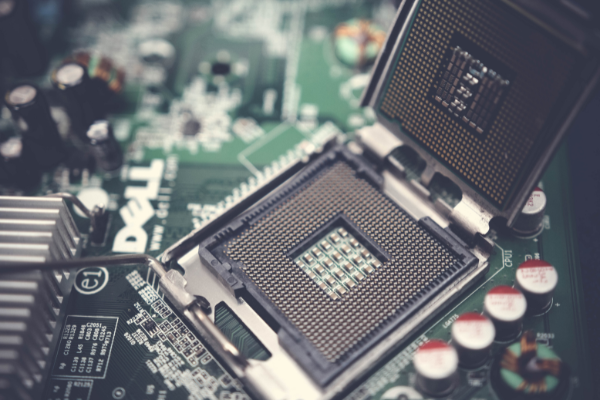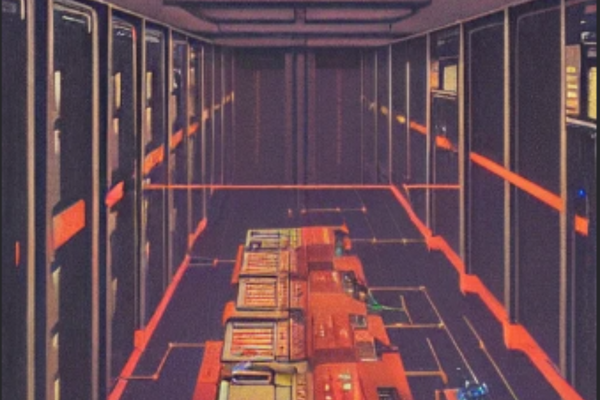Predictions for the Future of zIIP and Specialty Processors

Over the past few months, I’ve written about the current state of specialty processors for IBM Z mainframes with a particular concentration on the zIIP. We looked at what they are, how they work, and why you might want to consider exploiting them. But in this article, I want to ruminate on the potential of specialty processors in the future.
Before doing so, I want to strongly assert that I am not clairvoyant, so I do not know specifically what the future holds. But I think it is possible to make some observations based on existing practices and usage of specialty processors. So, of course, the “future” I discuss here will be a guess… but it will be an educated guess!
A Level Set
The first thing I’d like to do is to confirm that the need for specialty processors is as strong or stronger than it has ever been. According to a recent BMC Mainframe Survey, 86% of the largest mainframe shops expect MIPS to grow in the coming year. So, with the potential of specialty processors to mitigate cost growth as capacity increases, it stands to reason that organizations should continue to utilize them.
Of course, you could make the case that reducing prices could be a more efficient way to mitigate the cost of mainframe software. When you think about it, the zIIP is really nothing more than a re-purposed general-purpose CP, with controls that enable only certain types of workload to run on it. The only real difference is that a zIIP always runs at full capacity, even if the CPC is knee-capped (meaning that it is a sub-capacity model designed to run at a lower capacity).
But this is a simplistic way to look at the situation. Specialty processors are designed to encourage specific workloads – typically newer ones – to run cheaply on the mainframe. This enables IBM to reduce the cost of mainframe computing and encourages growing the footprint of what runs on the platform. Simply lowering prices would not necessarily accomplish the same thing.
My impression of IBM’s perspective (just my opinion) is that decreasing prices overall does nothing to protect the large revenue stream IBM earns from mainframe hardware and software. By redirecting modern workloads (where there is much competition) to specialty processors, IBM can decrease the price of “modern” workloads while protecting the revenue it garners from “legacy” workloads, such as CICS and IMS transactions and batch programs (for which there is little to no competition).
An additional consideration is the cost of the specialty processors, which are much lower than the cost of a standard CP. And that means that specialty processors can reduce both software and hardware costs!
Types of Specialty Processors
Keep in mind that there are three different types of mainframe specialty processors: ICF (Internal Coupling Facility), IFL (Integrated Facility for Linux), and the one we’ve talked about the most, zIIP (Integrated Information Processor). We chatted about the purpose of each of these in my first post here: Understanding Mainframe Specialty Processors, so check that out if you need a high-level overview of what they do.
For the purposes of reflecting on their future, those are the specialty processors we will consider. Nevertheless, on IBM Z servers, there are some processor units (PUs) that are part of the system base but are designed for specific purposes. They include the System Assist Processor (SAP) used by the channel subsystem, the Integrated Firmware Processor (IFP) used in support of select features, and two spare PUs that can transparently assume any characterization during a permanent failure of another processor unit.
Then there is the IBM Integrated Accelerator for Z Sort. Not technically a specialty processor, this feature was introduced with the IBM z15 and helps reduce CPU costs and improve the elapsed time for sorting. This is accomplished using a new instruction and optimally using virtual, real, and auxiliary storage.
Although you might want to think of these PUs and features as specialty processors, they are not exactly like the IFL, ICF, and zIIP, which are separately priced options. Nevertheless, if you extend the notion of what a specialty processor is, then it becomes obvious that we will continue to see more specialty hardware like this being introduced into future IBM Z hardware configurations.
But what about the zIIP and its cohorts?
Looking Into The Future
As we peer into the future to see if, how, and why specialty processors will be used, we first recognize that many organizations have implemented them and rely on them. This helps to secure their future, at least somewhat. If IBM were to consider eliminating specialty processors, it would negate the purpose for which they were developed, reducing the cost of newer workloads and extending the viability of the mainframe platform.
So, taking specialty processors away would be difficult unless IBM also created another way to achieve the same purpose. As long as specialty processors continue to work and are being used by customers, it is safe to assume that they will be viable for the long term.
On the other hand, introducing additional specialty processors might be more practical. For example, as use cases and computing techniques expand for Artificial Intelligence and Machine Learning, it would not be surprising if an AI specialty processor is introduced. Security and cryptography are other areas that might benefit from specialty processors. But, of course, this is pure speculation on my part.
You should also keep your eyes on IBM’s pricing policies and announcements. As pricing metrics change, the cost patterns and expectations of users change. Therefore a future pricing option might obviate the need for specialty processors or, indeed, change the use cases for which they are designed.
For example, you might consider the impact if your organization changes from a sub-capacity pricing metric like AWLC to the newer tailored-fit pricing metric. Although tailored-fit pricing is not exactly a full capacity metric, it is not based on an R4HA peak. So, unlike sub-capacity pricing metrics, where only reduced workload during peak periods saves money, any zIIP redirection from general-purpose CPs to zIIPs will likely save you money, eventually, when you use tailored-fit pricing.
The Bottom Line
It seems to me that the future is bright for specialty processors. There should be no worry about implementing them today to reduce costs. Of course, it makes sense to keep an eye on IBM’s announcements and pricing options to ensure that you are using specialty processors optimally at your site.
Craig Mullins, Copyright Craig Mullins Consulting, Inc
Find Out More
Learn more about Relocate
Releted Tags
Related Post

Is It Time to “Modernize” your Modernization Plans?
Over the last several decades, I have spoken to many organizations about…

Overcoming the Friction of IT Modernization Plans
Many organizations' modernization plans become “the best-laid plans of mice and men.” …

MIPS versus MSUs: What’s the Difference?
How do we rate the capacity of IBM System Z mainframe hardware?…

Recent Comments